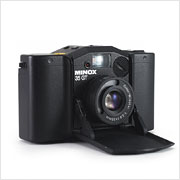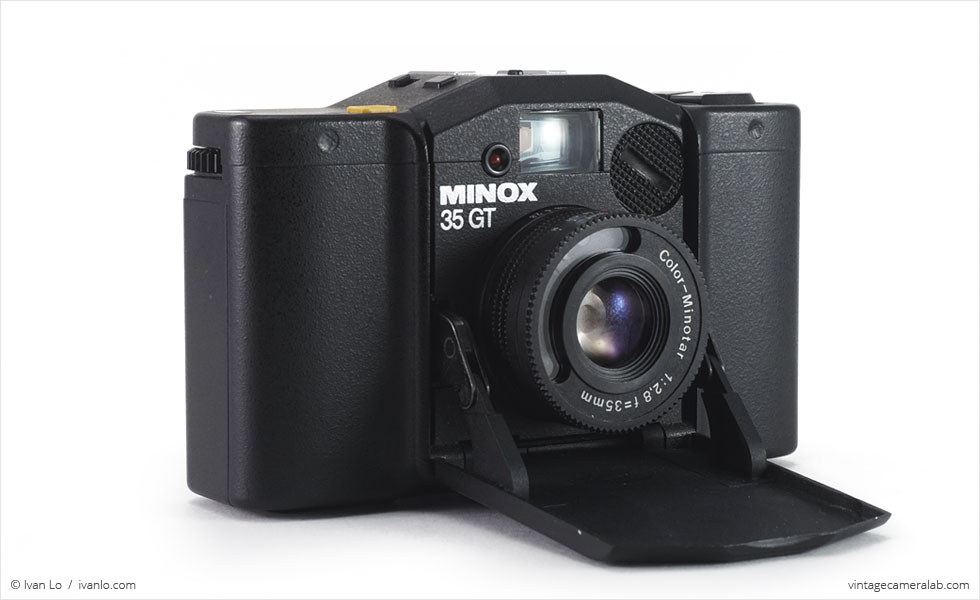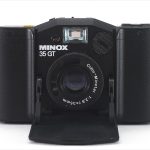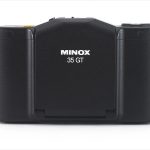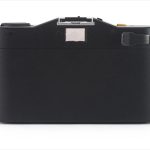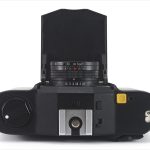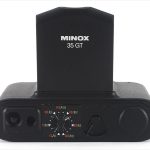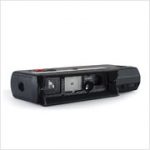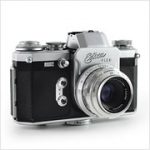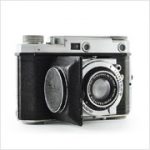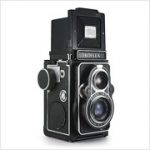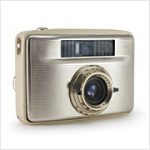Minox 35 GT Specifications
| Manufacturer: | Minox GmbH |
| Origin: | West Germany |
| (modern day Germany) | |
| Made in: | West Germany |
| (modern day Germany) | |
| Introduced: | 1981 |
| Type: | Folding, Viewfinder |
| Format: | 135 Film |
| Dimensions: | 10 x 6.2 x 3.2 cm (closed) |
| 10 x 6.2 x 6.3 cm (open) |
Minox 35 GT Overview
The Minox 35 GT is a compact viewfinder camera introduced in 1981 as the third variant of the Minox 35 EL which is arguably the smallest full-frame 35mm camera ever made (other contenders include the Rollei 35, Olympus XA, and Minolta TC-1). With the exception of the Minox 35 ML and MB (which had a more rectangular body) as well as the 35 PE (which had a built-in flash on the side), the Minox 35 GT and its siblings are virtually identical with the only real differences between them being internal. In one form or another, the Minox 35 was manufactured from 1974 to 2004, giving it an impressive 30 year production run.
The first step in the operation of the Minox 35 GT is to unfold the camera which is done by simply hooking a fingernail at the top of the hatch and pulling downward, an action which also extends the Color-Minotar 35mm f/2.8 lens into position. Focus and aperture are manually chosen by rotating rings on the lens itself while the camera’s auto exposure system is entrusted with calculating a suitable shutter speed.
Directly above the lens is the viewfinder window flanked on either side by the self-timer light and the battery door. The film rewind knob is located on the user’s left-hand side of the top plate, followed by a hot shoe and self-timer switch in the middle, a battery check button, a switch that doubles the exposure time to compensate for backlit subjects, an orange shutter button with adjacent threaded cable release socket, and a frame counter. The film door latch, film speed indicator, tripod socket, and film rewind release button are all found on the bottom plate of the 35 GT. The two-stroke film advance lever and the viewfinder are the only features on the back.
As far as I’m concerned, the Minox 35 is one of the greatest 35mm cameras ever made: a near perfect blend of quality, compactness, and cleverness. I had been searching for a few years for the right deal to come by on eBay when suddenly two of them fell into my lap: an original Minox 35 EL (no backlight compensation switch or self-timer and a red shutter button with cable release socket drilled right into it) and the Minox 35 GT pictured here.
Find your very own Minox 35 GT on eBay.
McKeown, James M. and Joan C. McKeown’s Price Guide to Antique and Classic Cameras, 2001-2002. (Grantsburg, WI, USA: Centennial Photo Service, 2001), p 472-473.
“Milestones,” Minox GmbH, https://www.minox.com/us/outdoor/About-Minox/Milestones/
